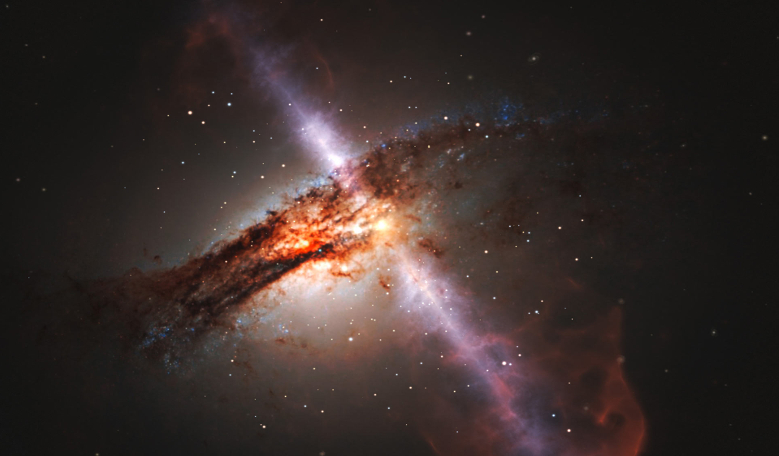Using the Hubble Space Telescope, which recently celebrated 25 years of operation, a team of astronomers have been able to measure the kiloparsec-scale proper motions of eleven nearby optical jets, in a sample that is the first of its kind.
Many aspects of relativistic jets from super-massive black holes are not well understood, such as what particles make up the jet, how long they last, and the speed profile of the ionised gas (the plasma) as it extends out of the host galaxy and into the intergalactic medium. Information gleaned from these phenomena are generally taken from proper-motion measurements of the jets on parsec scales, however, jets extend much further than this and direct observations of jet motions on much larger scales (such as kiloparsecs and Megaparsecs) are rare.
To put things into perspective, parsecs are equivalent to around 3.26 light years or 206265 astronomical units (Au), where one Au is roughly the distance from the Earth to the Sun. A kilo parsec is therefore a 1000 parsecs and a Megaparsec is one million parsecs. The centre of the Milky way for example is more than 8 kilo parsecs (26, 000 light years) from the Earth and roughly 34 kilo parsecs across.
For many years, there were only two measured proper motions of jets on kiloparsec scales – M87 and 3C 120 – both taken with the Very Large Array (VLA). In the case of M87, it wasn’t until 1999, after using four years of HST Faint Object Camera (FOC) imaging data that the speeds in its inner jet were confirmed. Nonetheless the speed of knots in the jet, i.e moving packets of plasma, proved very controversial. A knot in the jet of 3C 120 was also observed to have a speed of the equivalent to 4c, with c being the speed of light.
Now, a team of astronomers, whose lead author on the research paper is Eileen T. Meyer from the University of Maryland, Baltimore, have used new HST data coupled with archival data to map the full velocity profile of jets from near a black hole to their final deceleration as they extend out into and beyond the host galaxy. This has been made possible to a large degree by the long operating lifetime of the HST that has consequently provided original snapshot images of optical jets first taken in the 1990s.
Their results state that, “in comparison to other recent HST observations of lower-power optical jets M87 and 3C264, where highly superluminal speeds (6−7c) have been observed in the optical kpc-scale jet, our first proper-motion study of a powerful quasar jet reveals no significant proper motions.”
Superluminal refers to the apparently faster-than-light motion seen in some radio galaxies and sources containing a black hole. However, it is not truly known if these apparent velocities greater than the speed of light are optical illusions and thus do not contravene the theory of relatively, or if indeed they are something else.
The results above indicate that the speeds of the jets are indeed apparent and Einsteins theory still holds. The paper goes on to say, “it remains to be seen whether this is because the jet has truly decelerated and is only mildly relativistic, or because the knot features in sources such as M87/3C 264 and 3C 273 represent very different things: moving packets of plasma in the first instance and standing shocks in the second.”
Further analysis will be needed to make this distinction and now that data samples such as these are available, it is likely that further interpretations of the knots will be released with much scrutiny.
For more information on the this research, see; https://arxiv.org/pdf/1701.05846.pdf











